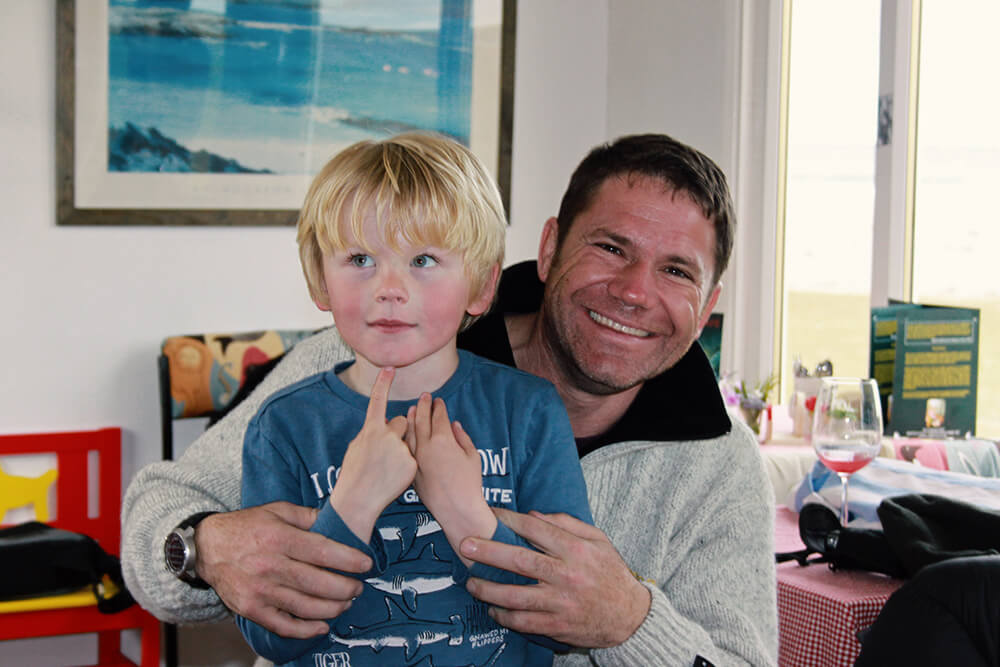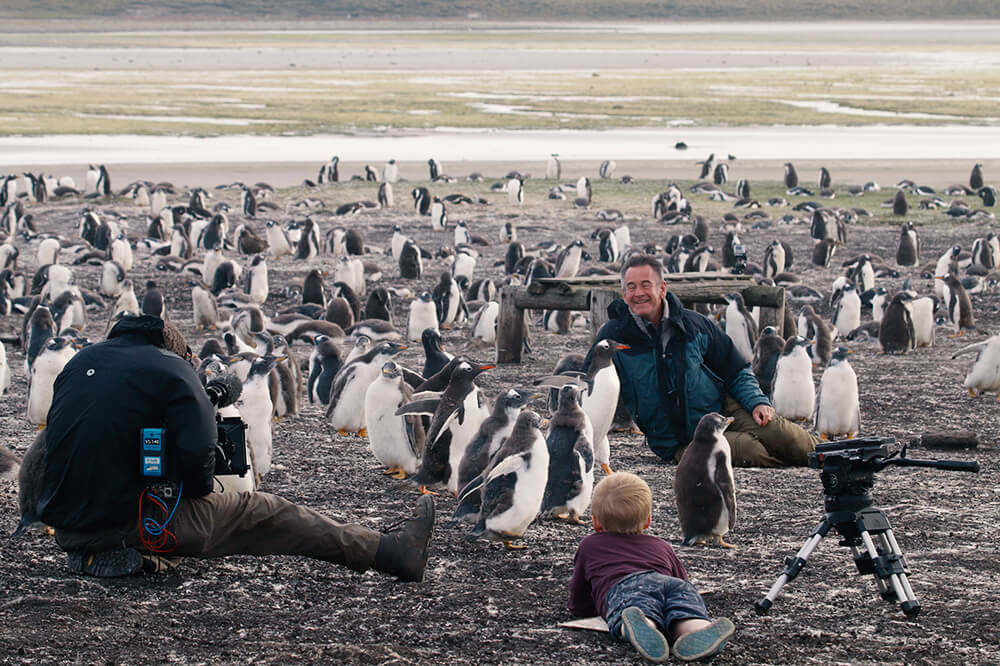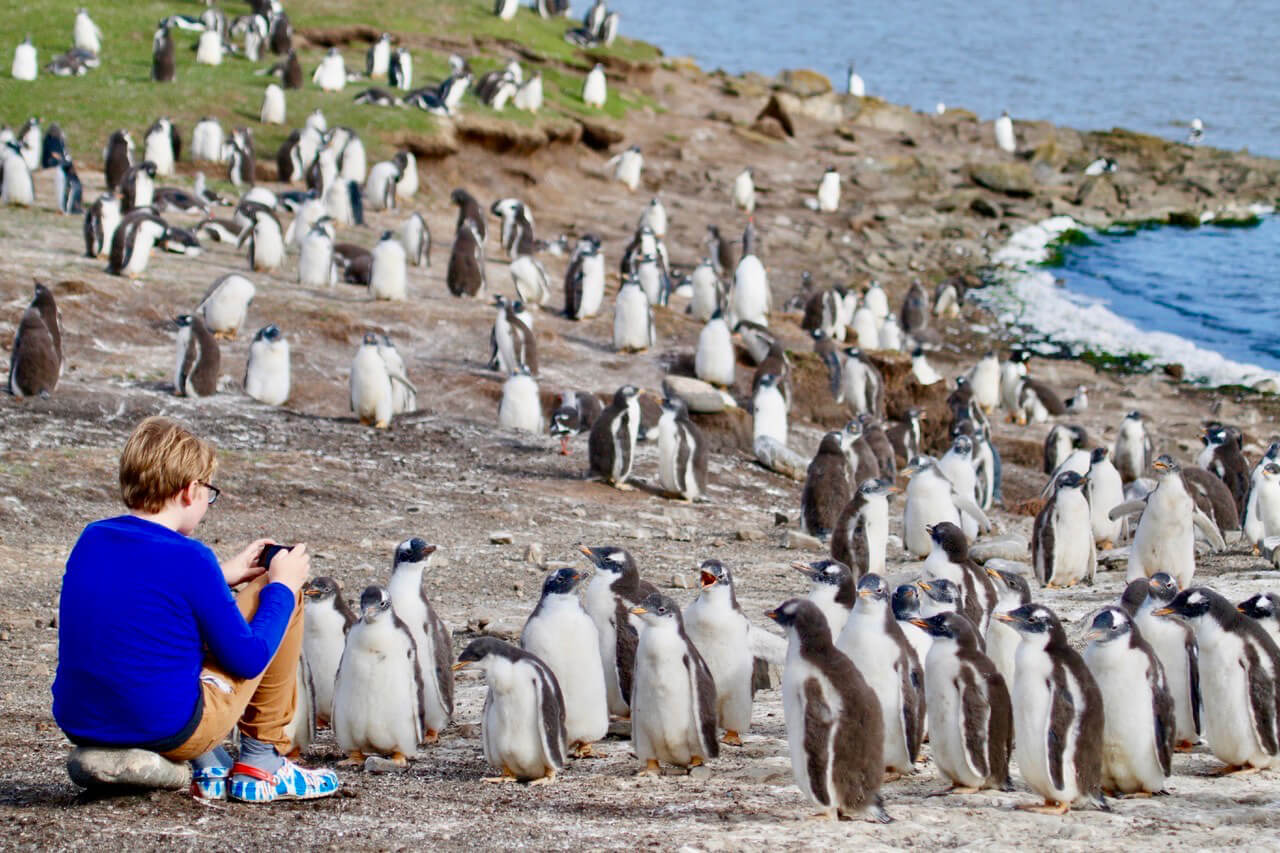Wildlife at the Lagoon
Our many visitors to Bluff Cove Lagoon know it is a peaceful unspoilt wildlife habitat, teeming with penguins at the rookeries and on the long white sand beach. It is home to over 1,000 breeding pairs of Gentoo Penguins. One of the most magical experiences is when the inquisitive Gentoos come up close while you are sitting quietly watching them!
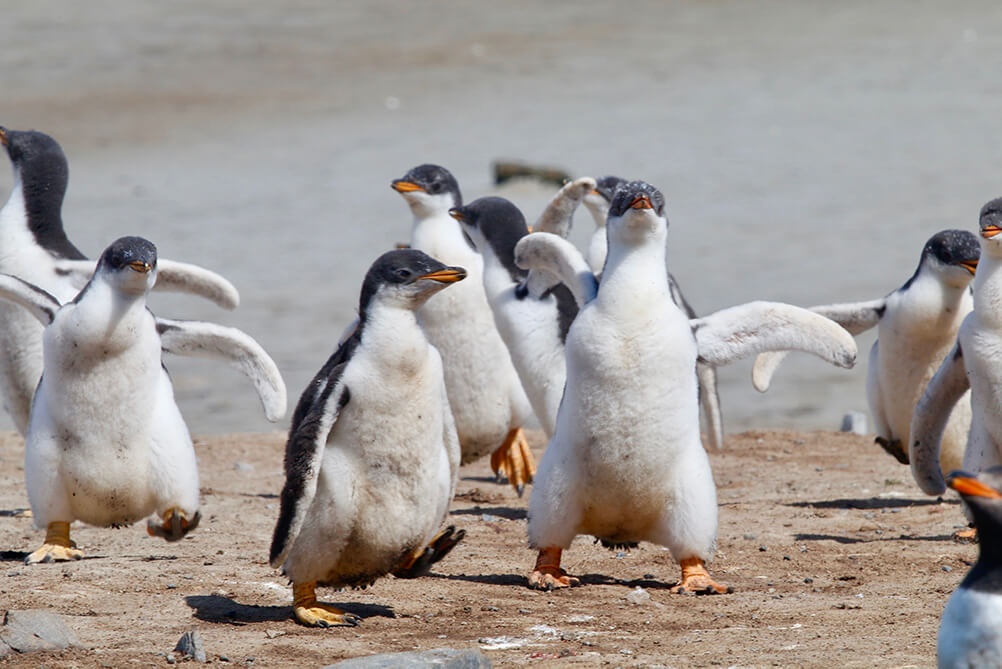
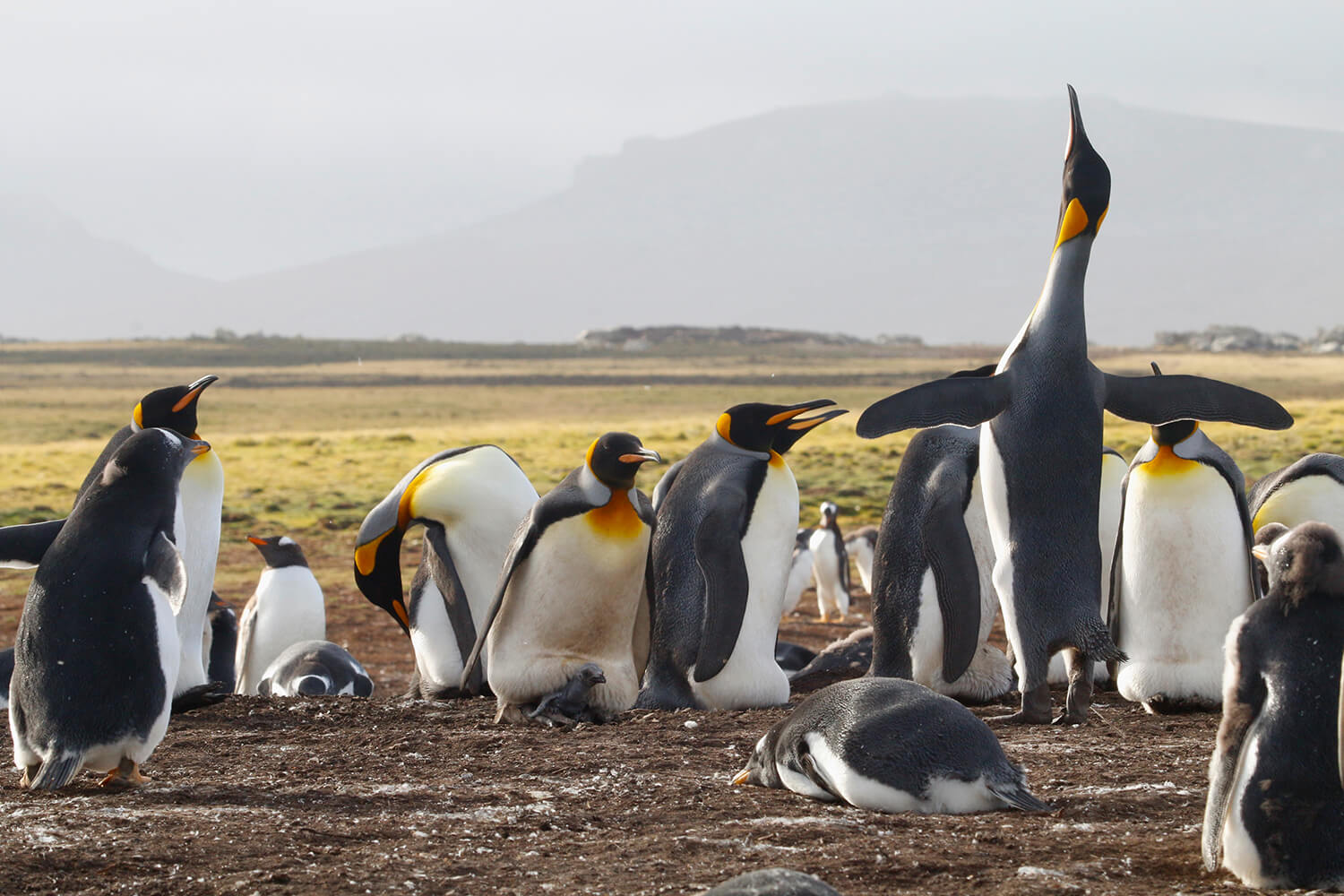
We also have a small but growing breeding colony of King Penguins, presently with twenty breeding pairs, their chicks and several juveniles. Magellanic Penguins visit throughout the summer from their nesting burrows on nearby East Island. Occasionally Rockhopper and Macaroni Penguins come to moult later in the season.
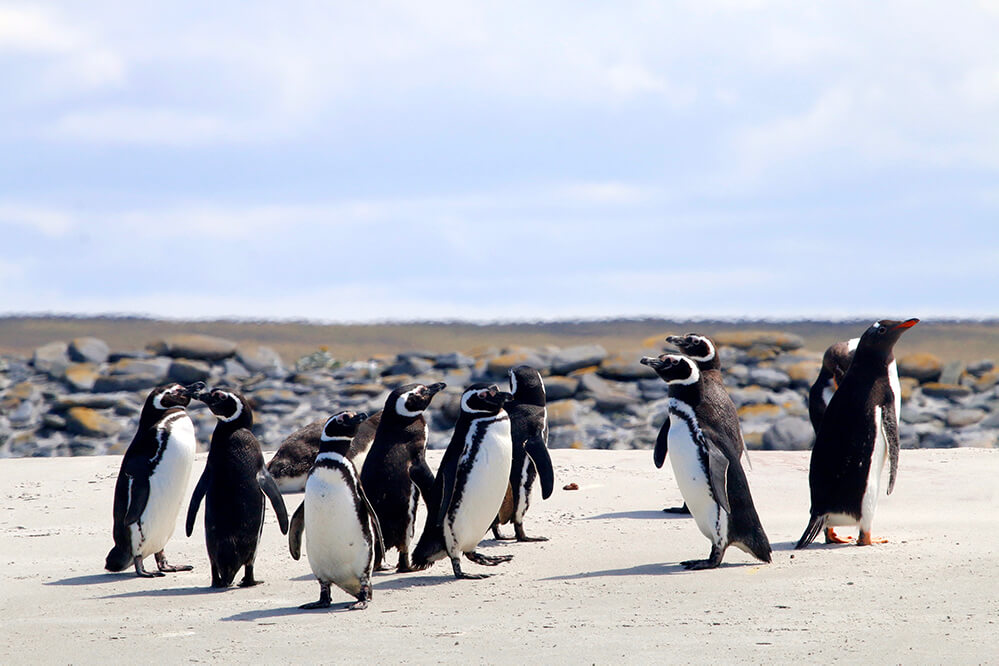
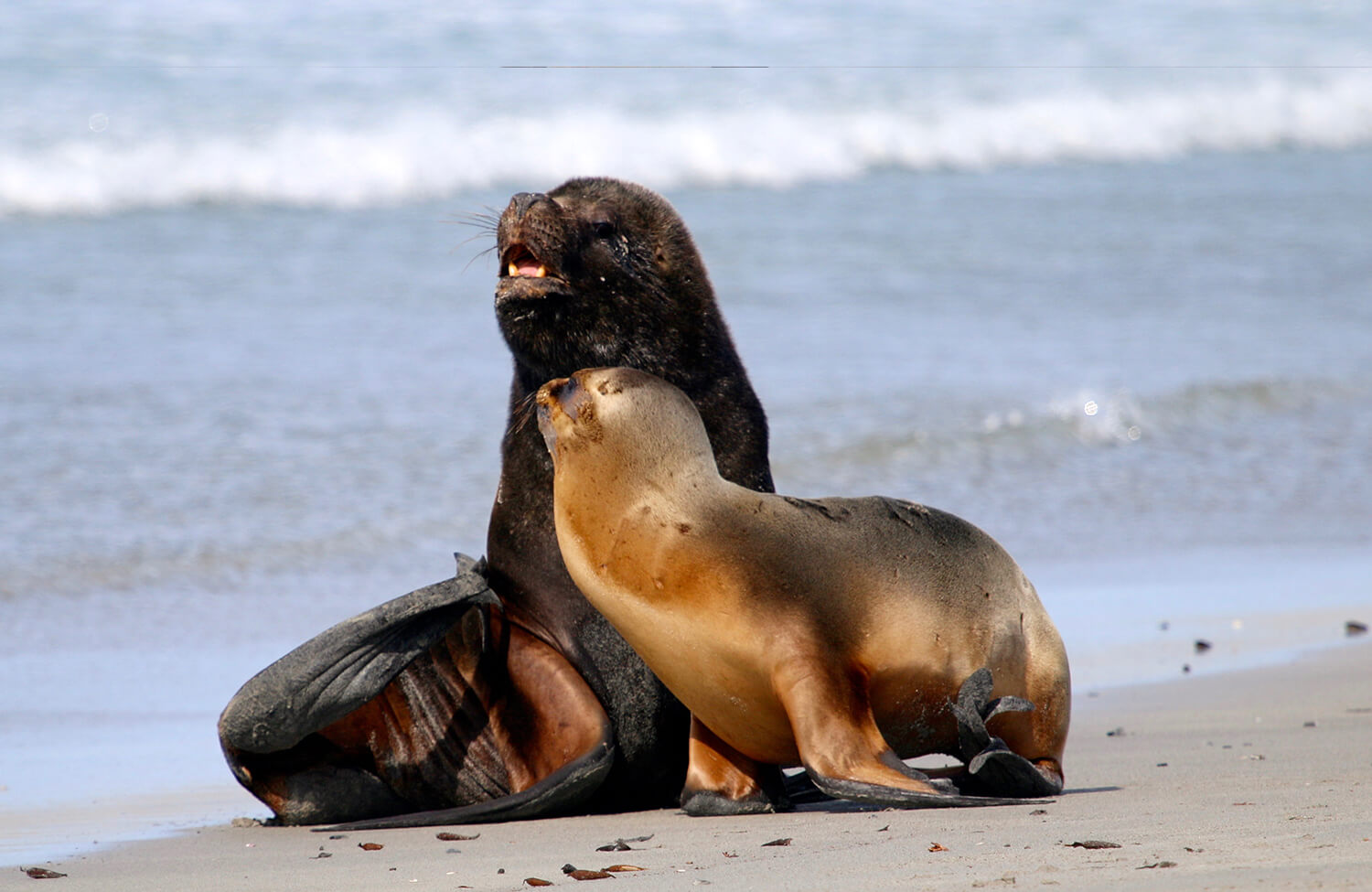
Near by there is a colony of Kelp Gulls, with Dolphin Gulls and South American Terns nesting amongst them. Around the café are lots of smaller breeding birds including Two-banded Plovers, Black-throated Finches and White-rumped Sandpipers, scuttling in amongst the sea cabbage.
Flora at the Lagoon
Sea Cabbage (right) surrounds the Café, growing by the beach. It has soft woolly silvery leaves and clustered yellow flowers which usually appear late December. Early sailors ate the leaves as they were a good source of vitamin C and helped to ward off scurvy.
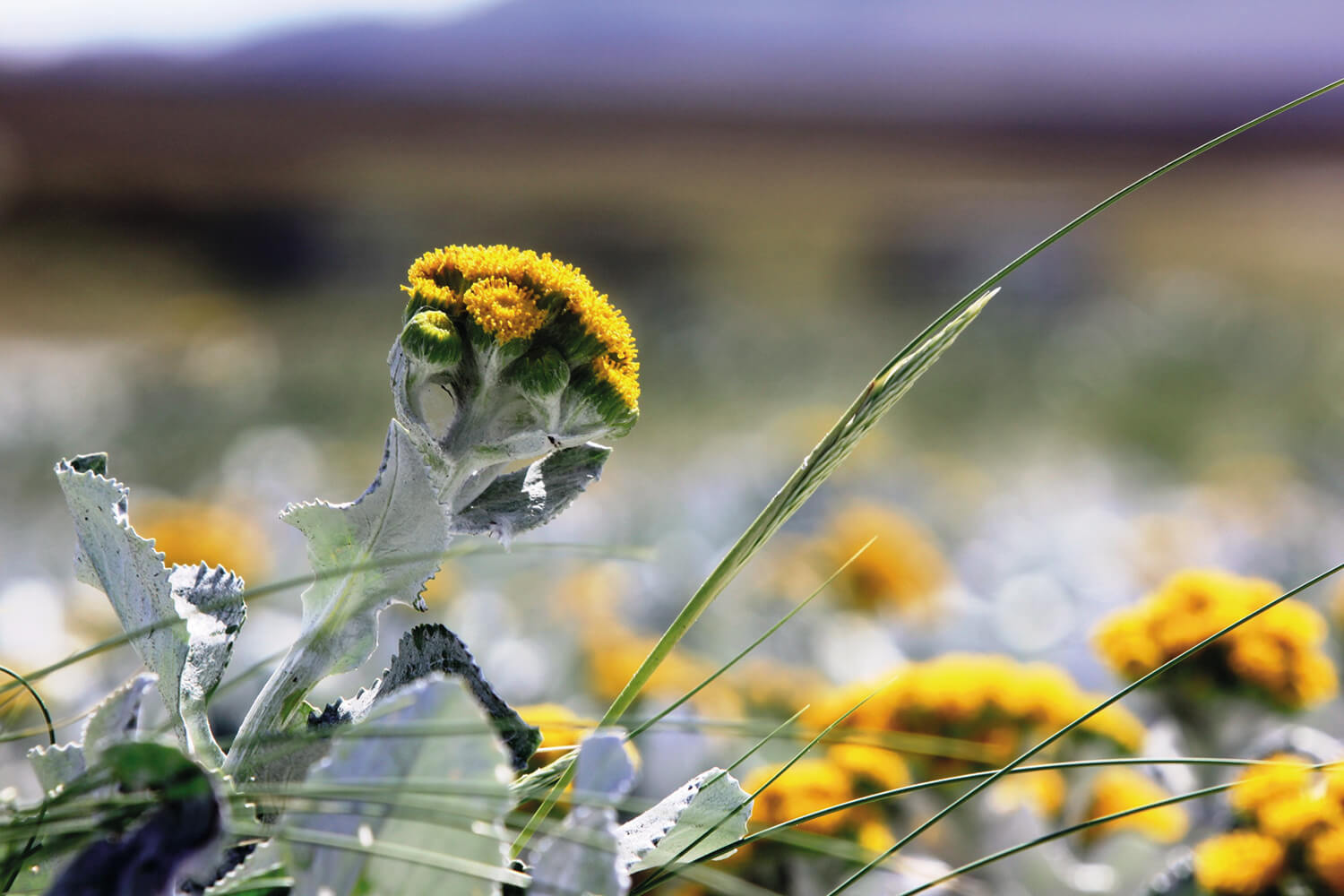
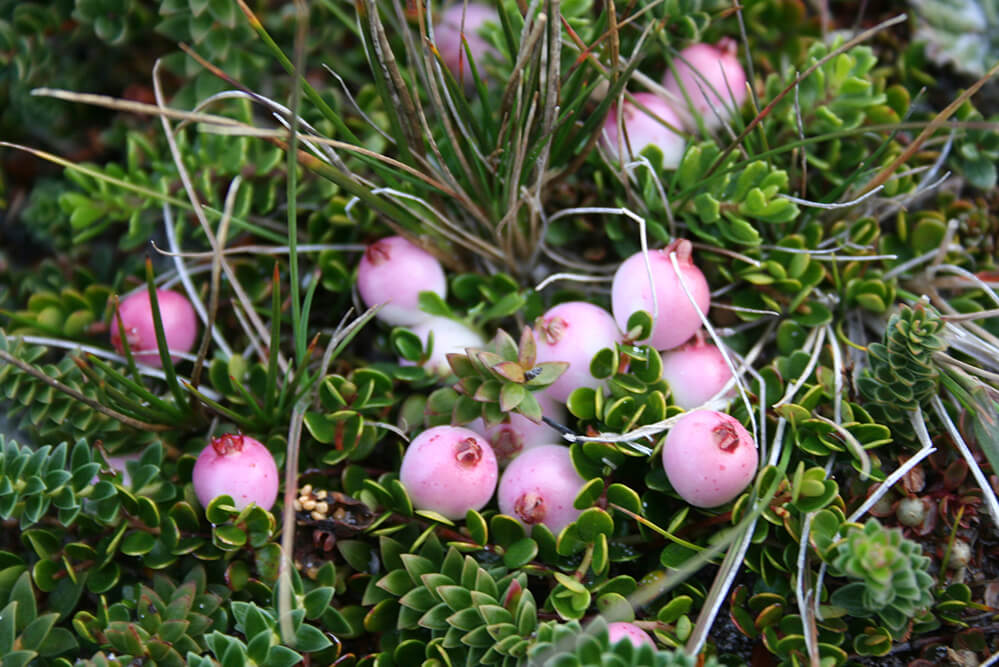
Teaberry vines grows in damp heath areas, it has straggling stems that lie on the ground making the berries fiddly to pick. Look out for them on the way to the Lagoon. The pinkish white berries ripen in March and have a delicate scented flavour. They are delicious and used regularly in baking in the Islands.
Also good steeped in gin and, my favourite, teaberry icecream. Many locals like the berries served straight up with fresh cream. The name originates from the late 1700s when sealers and whalers used the leaves as a substitute for tea.
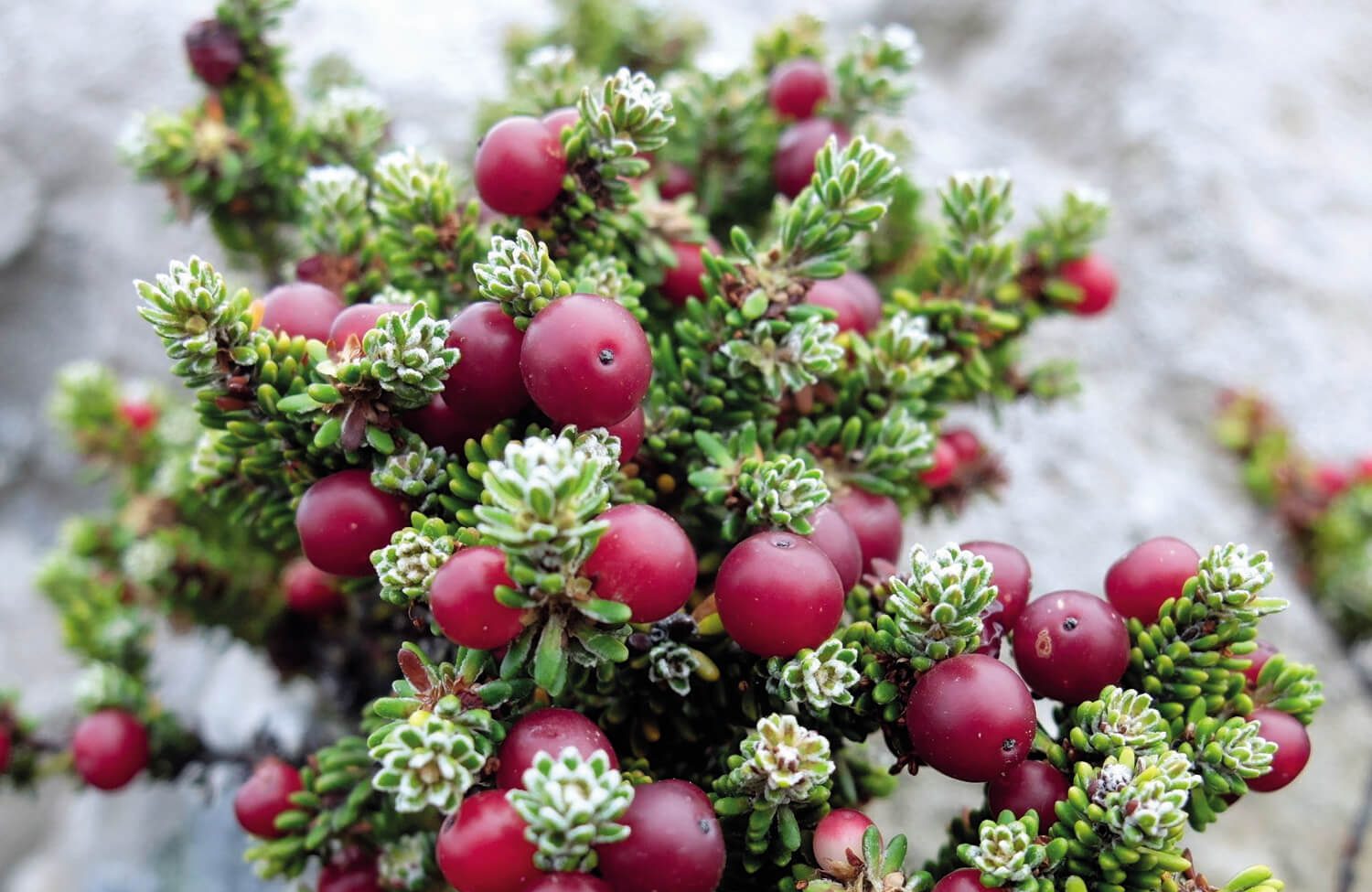
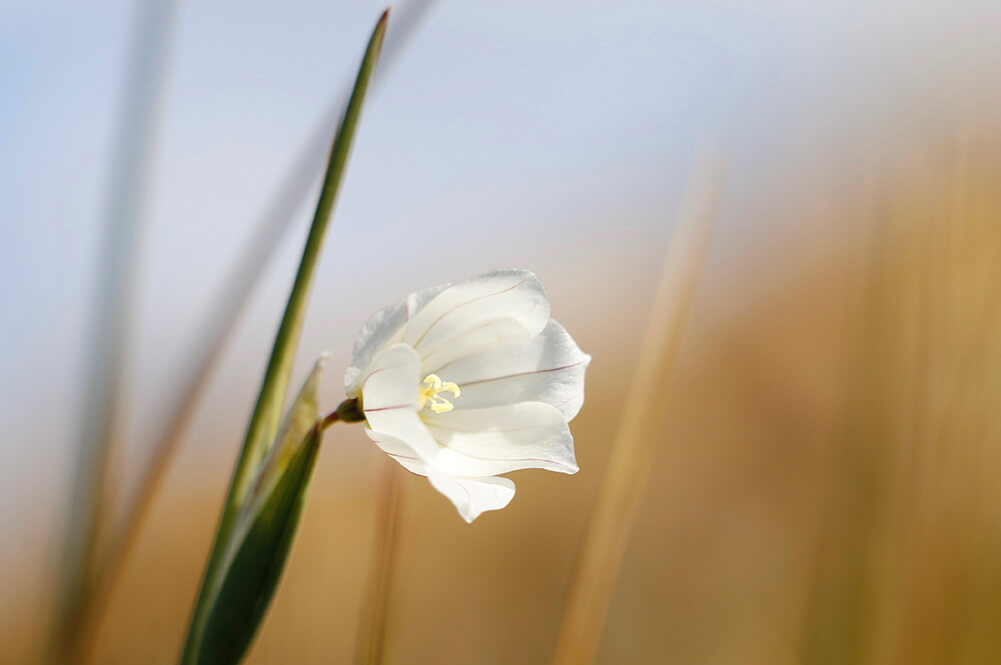
Pale Maiden is a perennial herb that grows in amongst the white grass and Diddle Dee. They bloom in November and have pretty white bell-like flowers that nod in the breeze and have a wonderful scent.
Other flora to look out for on the way to, and at the Lagoon are: Scurvy Grass (edible), Small Fern, Tall Fern, Vanilla Daisy, Wild Celery, Wild strawberry (grows in the stone runs), Stone run plant, Falkland Thrift, Mountain Berry, Pig Vine, Yellow Daisy and Spiky Grass. On the beach look out for seaweeds, particularly Kelp, the name Kelper (Falkland Islander) derives from the abundance of Kelp around our shores.
Toby’s Wildlife Journal
Toby now enjoys photographing the penguins. Previously he has hosted two very special guests at the Lagoon; TV wildlife presenters Steve Backshall, filming BBC’s Deadly Pole to Pole, one of Toby’s favourite programmes, and Nigel Marven, who Toby went swimming with in the sea, yes it was cold.
On Nigel’s second visit he filmed the Lagoon for his TV series “Cruise Ship Adventure”.
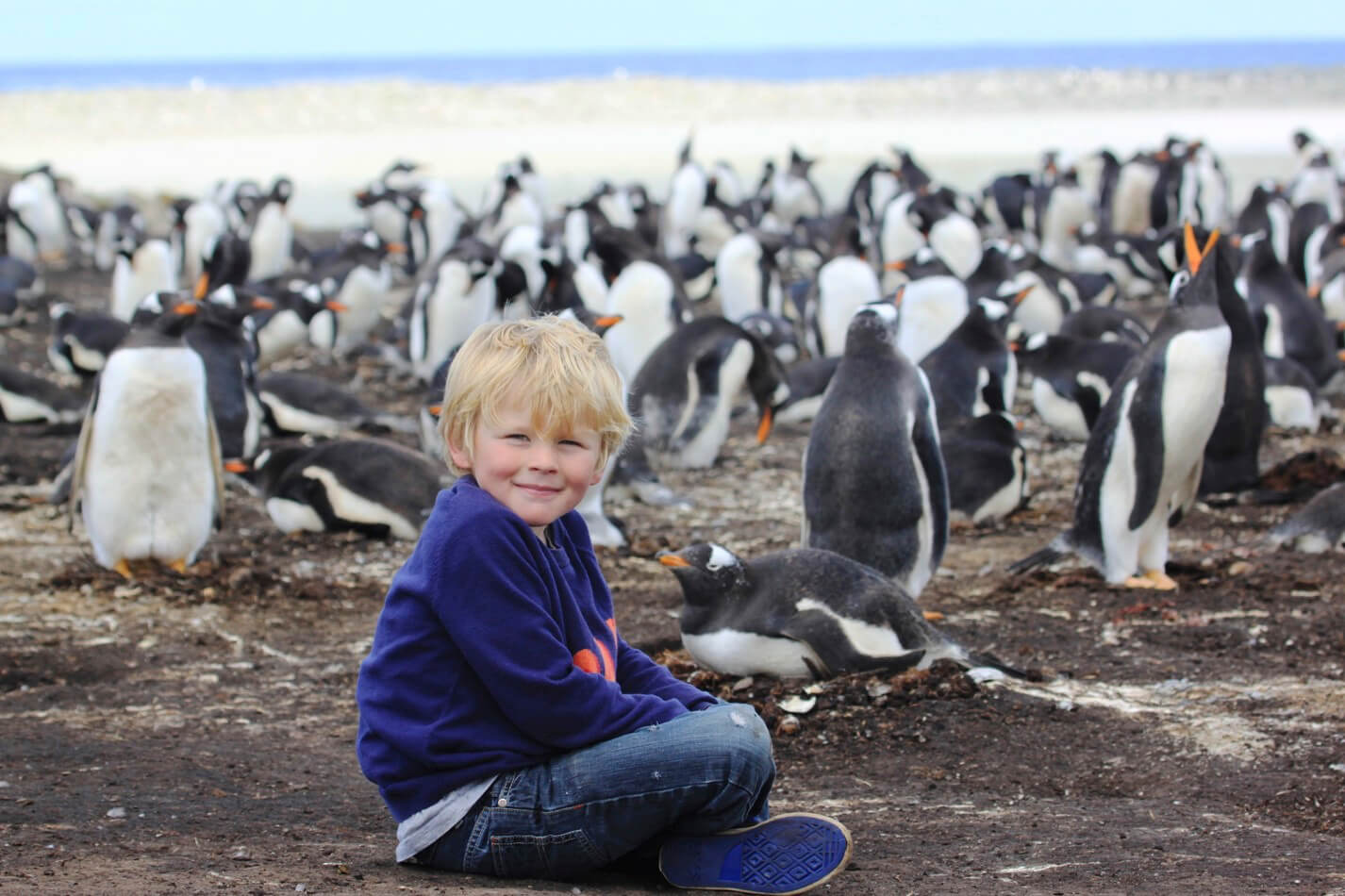
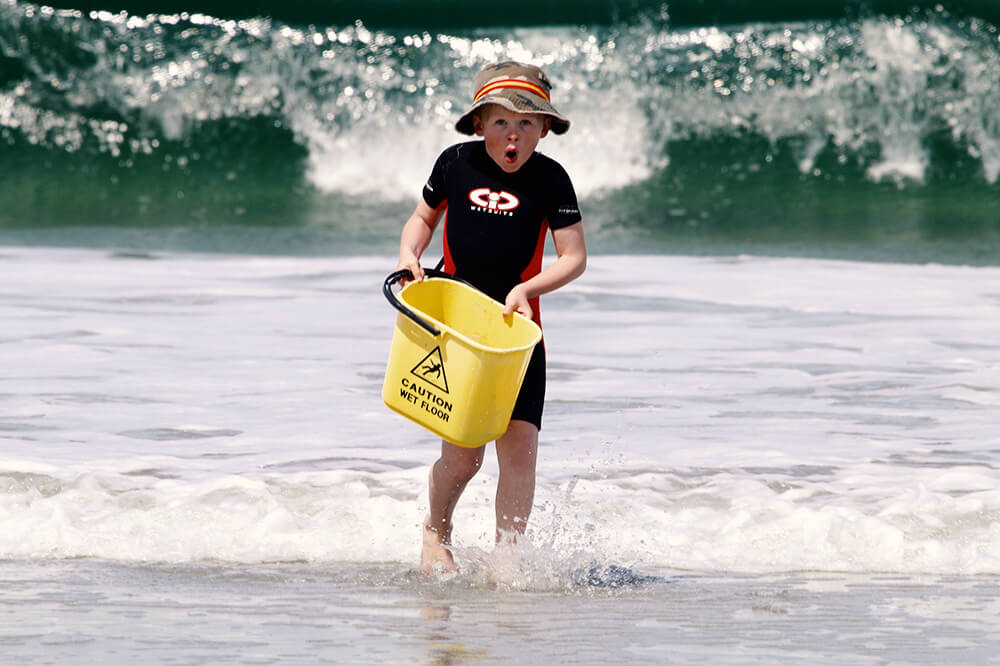
Toby’s favourite place at the Lagoon is still the rocky northern perimeter of the beach, where he can climb the rocks and explore the pools.
He also likes foraging in the seaweed left on the beach after a storm, finding molluscs attached to the kelp. The beach is a great hunting ground for him, with its many colourful shells. Toby also loves body-boarding in the surf.
